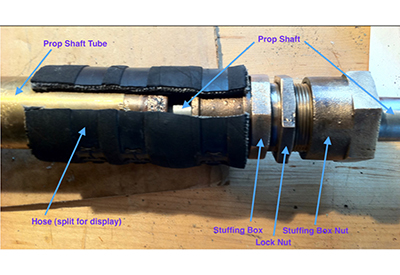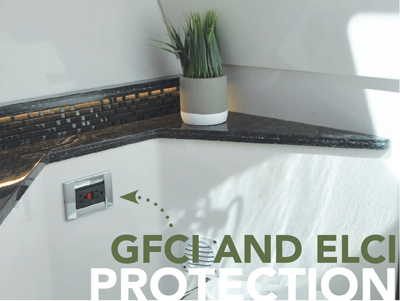Canadian Yachting – Modern Teak Decks
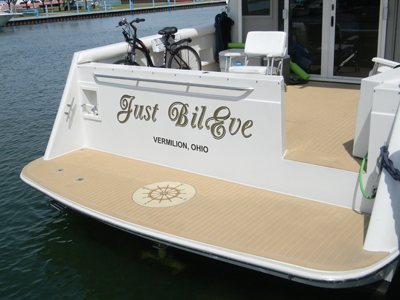
By Andrew McDonald
A beautiful synthetic teak deck installation.
Wooden boat production in the 1940’s and 50’s was epitomized by expert craftsmanship, beautifully faired curves, bright varnish, and high-grade materials. Teak in particular is highly rot resistant, prized for its ability to produce its own oil, and recognized by its tight, straight grain. Anyone who has been around a classic wooden boat will not only feel the nostalgia – but can also smell it in the varnish and wood dust that permeates the surrounding air.
This golden age of wooden boatbuilding was followed by years of experimentation and engineering in fiberglass. This involved the use of polyester, epoxy and plastic resins engineered into boat-like shapes – lowering the costs of manufacturing and requiring that the every-day boater just had to take on small repair and maintenance tasks. The first years in this transition held a mix of wood and fiberglass; wood was used as a coring material, with beauty found in trim, handles and bases of teak. Over the years, the wood trim and veneers have been whittled down to the bare minimum. In recent decades we have seen composite woods and carbon fibre as the aesthetic focal points instead. A sharp contrast can be seen in the America’s Cup contenders; a century of change between Herreshoff’s Reliance and modern AC50 class yachts.
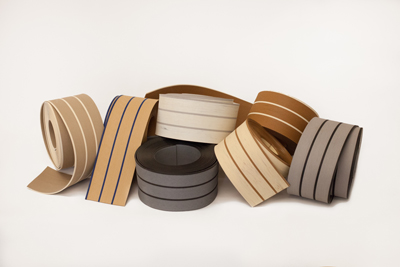 A wide range of colours and patterns are available.
A wide range of colours and patterns are available.
The pendulum has swung back in recent years. Modern cruisers are looking for all the advantages discovered in a century of boatbuilding: modern design and engineering, ease of repair and maintenance, and the aesthetics that call to mind the rich history of boating.
Teak trim and veneer are still being used extensively below decks in modern production boats – but more and more, owners are looking for a more traditional look on deck, leading to an explosion in the manufacture of teak-style decking – decking that looks and feels like teak, without the cost of teak wood, or the installation and maintenance costs to keep it looking great.
Traditional teak decks pose a number of problems: Teak is a slow growing hardwood native to south-east Asia, taking 40+ years from planting to harvesting. Large portions of the teak coming into maturity over the next few years have already been sold. There is high consumer demand, with poor availability. In short, teak is expensive. Add to the materials cost, the cost of craftsmanship: turning raw lumber into fitted curved decks, followed by caulking, varnishing, oil and maintenance.
Enter synthetic teak – a less expensive option, made from long-lasting and environmentally sustainable materials. The decking material is manufactured in rolls of a soft/flexible PVC, roughed on the surface to a 40 grit, making it feel and look like a wood surface. The rolls are tinted to a shade similar to freshly milled teak, with black or white lines pre-printed to give the appearance of caulking between planks. The underside is grooved to allow solid contact between the synthetic components and the boat surface beneath. Sections have a beveled edge (much like a DIY hardwood flooring), allowing the product to be both manageable and customizable. Synthetic teak can be re-sanded over time to restore any colour fade. For maintenance cleaning, the surface can simply be pressure-washed. The design ensures that it is non-slip, UV rated and anti-fungal. From a safety standpoint, the product is fire rated and doesn’t build up static friction. An added bonus: it’s stain resistant – resistant enough for the marketing folks to state specifically that it’s safe against staining from red wine spills and blood.
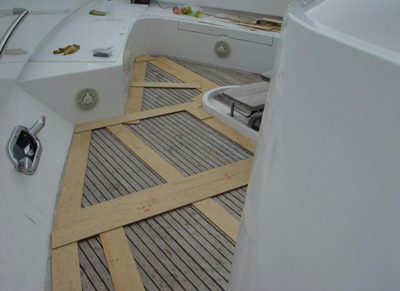 It looks real. It feels real. It has none of the disadvantages of traditional teak, and it provides significant advantages to more common white decks. Finally, the value add in terms of aesthetics and resale value can be high.
It looks real. It feels real. It has none of the disadvantages of traditional teak, and it provides significant advantages to more common white decks. Finally, the value add in terms of aesthetics and resale value can be high.
Installation is fairly straightforward, with sections essentially pre-cut and glued into place. Boat owners can work with manufacturers to install the product in a number of ways, depending on their desired level of involvement.
The first is the DIY, cash and carry route – a roll of pre-formed synthetic flooring is purchased to a specific length and width. This option is ideal for small, straight sections, when little design flourish is required.
Second is a more customizable DIY option, by templating sections. This option is more labour intensive, with some prep-work and pre-planning needed, but the results can be well worth the effort. Templates are made using masking or construction paper. Paper is laid out, secured and marked. Once sections are transferred, plank orientation is specified. Sections are numbered and labeled, and then sent to the synthetic teak supplier for manufacture. Manufacturers supply detailed information on the format and labeling that they like to see to ensure that there are no mistakes, and that the end result is what is desired. Once manufactured, components are numbered and labeled to match, and installation of the pre-formed sections becomes a DIY project.
Finally, a completely hands-off approach; having a contractor create templates and install the manufactured sections. This comes with a price tag, of course, but the end result is a professional design and installation.
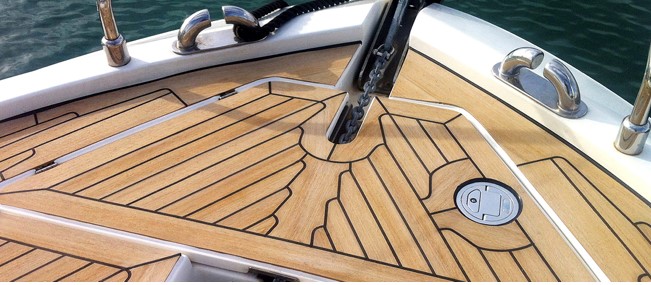 Creating a pattern from an existing deck to lay a new synthetic teak surface.
Creating a pattern from an existing deck to lay a new synthetic teak surface.
For more information, there are a number of suppliers and brands on the market, with evolving and expanding product lines; Nu-Teak, Flexiteek, Isiteek, PlasTEAK, Permateek. With this many brand options, how do you choose? I began my research at a boat show, and would encourage you to do the same. At an in-person meeting, a wide variety of sample pieces are available for you to touch and compare, and you can get a sense of what’s possible with peculiar shapes and sections. Ask for photos of boats similar to yours, and get a sense of the complexity of the project before you decide to DIY or hire a contractor. There are many options to consider, but one thing remains clear; synthetic decking is an emerging market, with many applications. Aesthetics and value aside, it’s clear that vessel owners who have made synthetic deck upgrades are increasing their enjoyment aboard.


